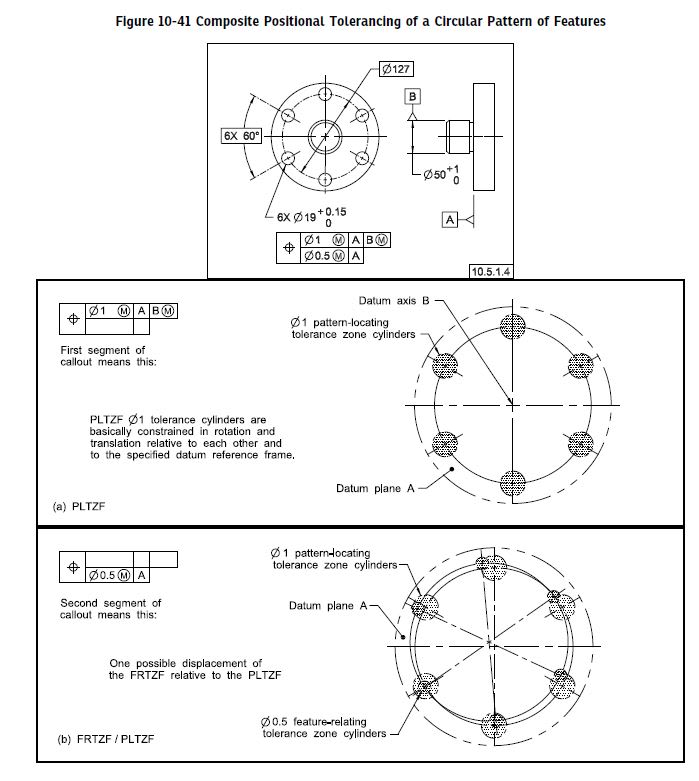Belanger, sorry for my confusion but:
Your initial statement:
"the pattern of holes will not shift relative to datum axis B but it will shift relative to the actual axis of datum feature B's AME."
The tip:
"When datum features are modified at MMB or LMB, the datum feature and the features being controlled may be able to shift relative to the datum axis or centerplane"
Since the tip and the question being asked in this thread deal with the same concept,
Are you sure there is no terminology problem at the tip?
Your last statement:
"the datum feature can displace from the datum, and the features being controlled can also deviate from the datum"
I'm not sure what you mean by "deviate from the datum". I think they cannot deviate from the tolerance zones, which are fixed relative to the datum, at least in the case shown in the tip or for the upper segment of a composite control.
My initial understanding of your comment was that since the tolerance zones of the pattern (in the top segment) are basically constrained to the datum axis, and the axes of the features being controlled must fit in those tolerance zones (in terms of the axis interpretation), then the features cannot really shift relative to the datum, but they can shift relative to the datum feature. The mobility of the datum feature relative to the datum axis can accommodate this.
In my opinion, the term "shift" as referred to in the standard describes the ability of the datum feature to move relative to the datum/datum reference frame, and effectively this allows some displacement of the features being controlled relative to the datum feature (but not the datum), which isn't available with the datum referenced at RMB. Where am I wrong?




